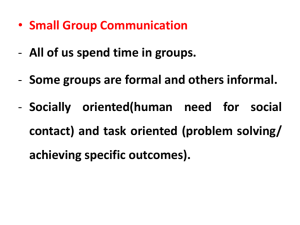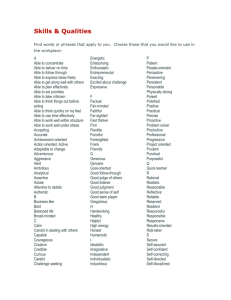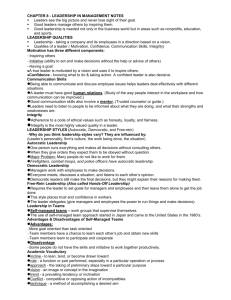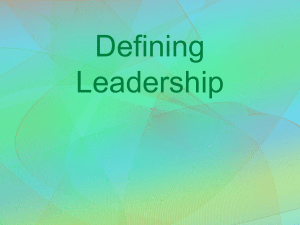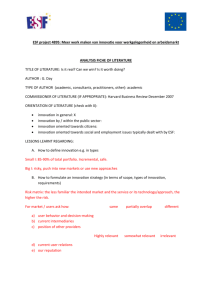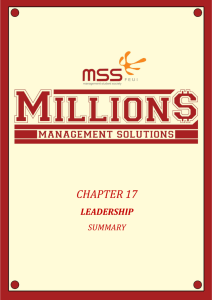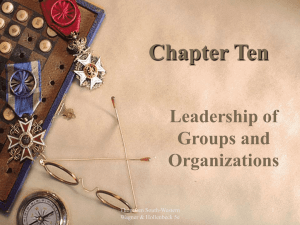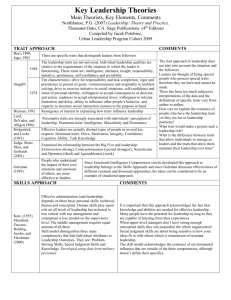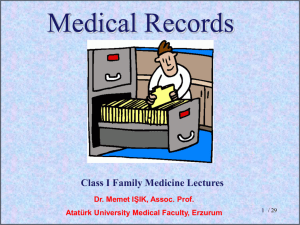Leadership
advertisement
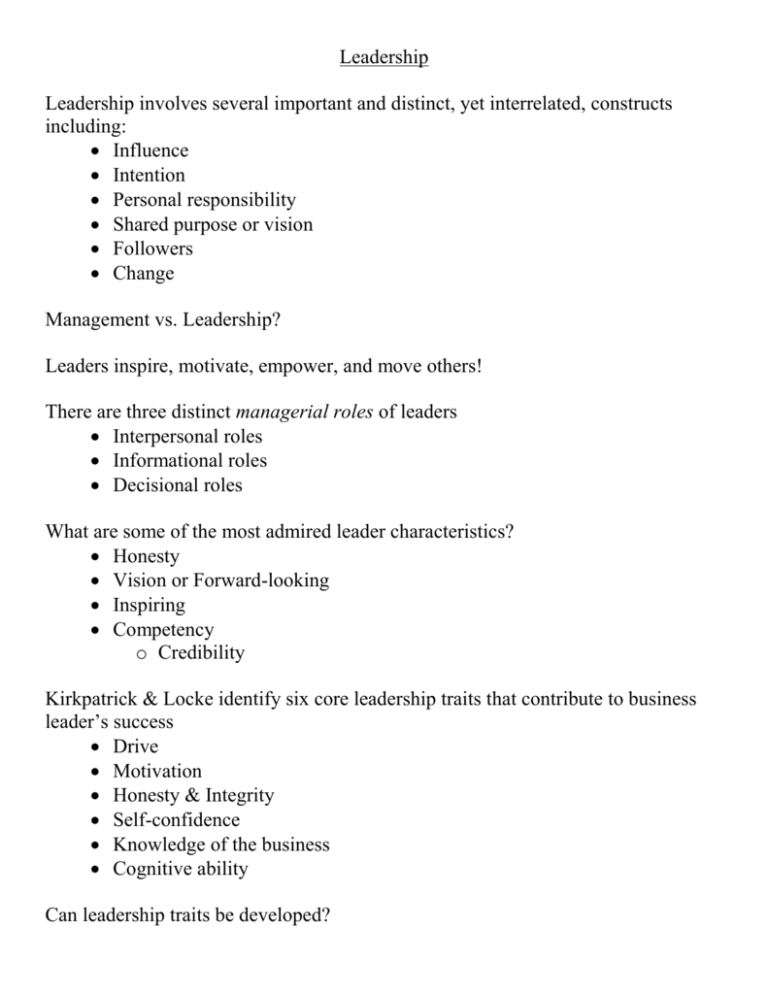
Leadership Leadership involves several important and distinct, yet interrelated, constructs including: Influence Intention Personal responsibility Shared purpose or vision Followers Change Management vs. Leadership? Leaders inspire, motivate, empower, and move others! There are three distinct managerial roles of leaders Interpersonal roles Informational roles Decisional roles What are some of the most admired leader characteristics? Honesty Vision or Forward-looking Inspiring Competency o Credibility Kirkpatrick & Locke identify six core leadership traits that contribute to business leader’s success Drive Motivation Honesty & Integrity Self-confidence Knowledge of the business Cognitive ability Can leadership traits be developed? YES! Leadership traits can be developed. Effective leaders often have high EQ’s. Are there gender differences in leadership? Men – more independent, instrumentally oriented, and competitive behavior Women – greater affiliation, attachment, cooperation, and nurturing behavior Situational characteristics are critical, too. o Differences in influence strategies Men rely on power strategies Women rely on personal relationships and indirect influence Men often describe their leadership style as transactional or task oriented Women often describe their leadership styles as transformational or interactive o Interactive leaders Encourage participation Share power and information Enhance self-worth of others Energize others Behavioral Approaches to Understanding Leadership University of Michigan – two distinct leadership styles o Job-centered leaders The extent to which leaders take charge of getting the job done o Employee-centered leaders Leaders engage in behaviors aimed at building trust, support, and respect of the employees Ohio State University – two dimensions with four leadership styles o Dimension one – consideration (employee centeredness) (high-low) o Dimension two – initiating structure (job centeredness) (high-low) McGregor’s - Theory X and Theory Y leaders Theory X leaders – Autocratic o Task oriented o Interested in details o Efficiency minded o Time and motion studies o Product oriented o Interested in promoting oneself o Fast decision maker o Somewhat extroverted o Self-appointed or company appointed o Close supervision o Paternalistic Theory Y leaders – Participative o Employee oriented o Interested in generalizing o Democratic to very permissive o Sensitive to individual’s needs o People oriented o Aware of morale o Slow decision maker o Somewhat introverted o Group appointed o General supervision o Maintenance specialist o Democratic o Consultive – encourage a high degree of involvement from employees with the ultimate decisions the choice of the leader o Democratic – confer final authority to the group and abides by whatever the group decides, with no exceptions Managerial Grid – A model based on a matrix value of 1 to 9 for two primary dimensions manager’s concern for people manager’s concern for production (81 possible combinations) Contingency Models Seeks to explain how effective leadership behaviors differ by the specific leadership context. These models argue that the most effective leadership behavior depends upon the nature of the specific situation. There is no one best way to lead. Path-goal Approach The leader clarifies a path by which subordinates will be able to achieve organizational goals. Situational leadership Suggests that leaders match styles of follower’s readiness levels and that there are two dimensions to leadership (task and relationship behaviors) Transformational leadership Leaders are capable of effecting major changes in the organization because of their compelling vision, their willingness to change the status quo of the organization, and their effectiveness in enlisting the support of followers in working towards achieving their vision by aligning it with the followers value systems and priorities. There are five practices of effective leaders Challenge the process Inspire a shared vision Enabling others to act Modeling the way Encouraging the heart What are some of the emerging issues in leadership? Technology Globalization Workforce demographics Workplace diversity
